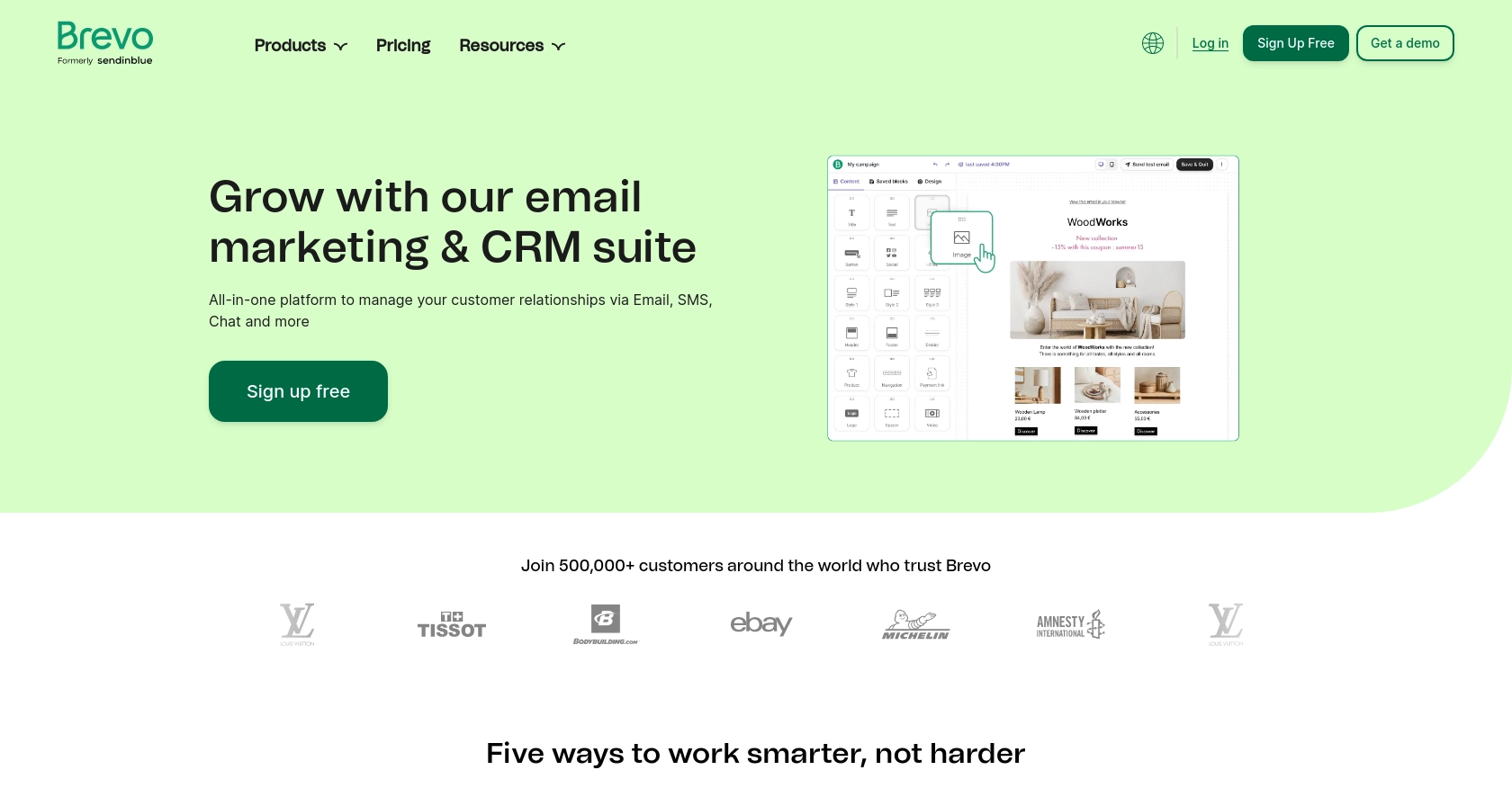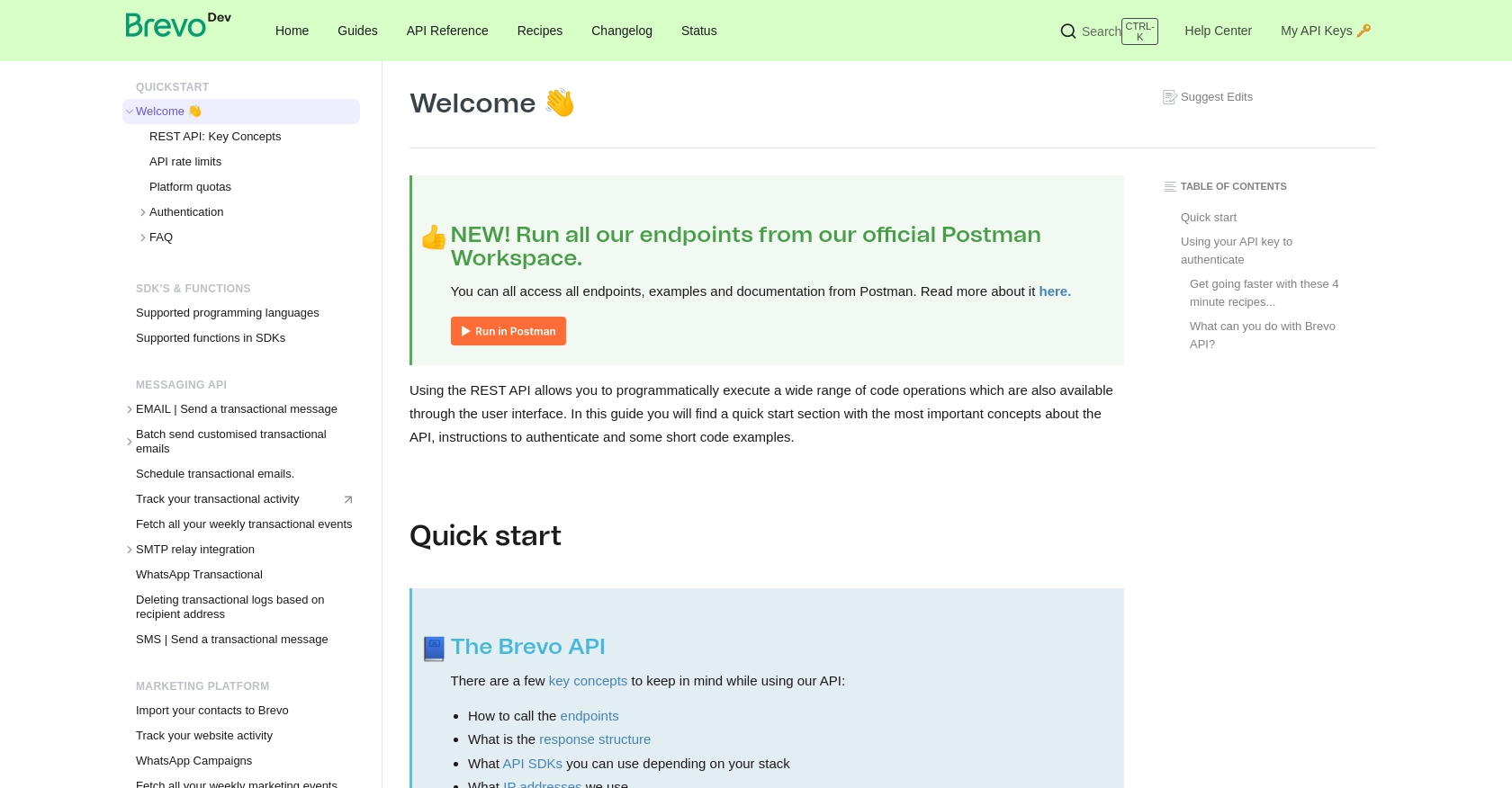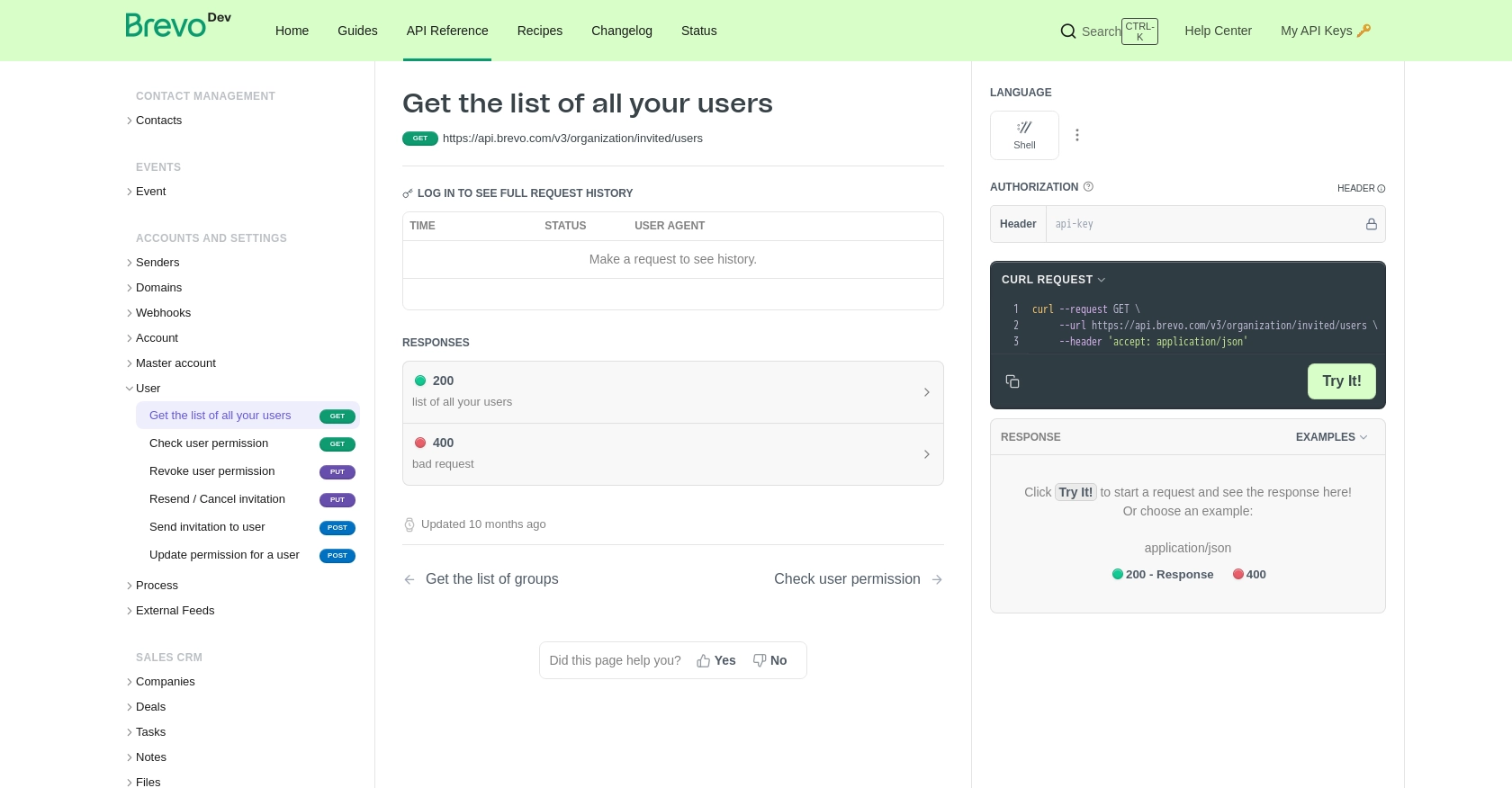Using the Brevo API to Get Users (with Python examples)

Introduction to Brevo API Integration
Brevo is a versatile platform offering a range of communication solutions, including email, SMS, and WhatsApp campaigns. It provides businesses with tools to manage and optimize their marketing efforts, ensuring effective engagement with their audience.
Developers may want to integrate with Brevo's API to streamline user management and automate communication processes. For example, using the Brevo API, a developer can retrieve a list of users to personalize marketing campaigns or manage user permissions efficiently.
Setting Up Your Brevo API Test Account
Before you can start integrating with the Brevo API, you'll need to set up a test account. This will allow you to safely experiment with API calls without affecting live data.
Create a Brevo Account
If you don't already have a Brevo account, you can sign up for a free account on the Brevo website. Follow the instructions to complete your registration and confirm your account via email.
Generate Your Brevo API Key
Brevo uses API key-based authentication to verify your identity and authorize your requests. Follow these steps to generate your API key:
- Log in to your Brevo account.
- Click on your name in the top-right corner and select SMTP & API from the dropdown menu.
- Navigate to the API keys tab.
- Click on Generate a new API key.
- Name your API key and click Generate.
- Copy the generated API key and store it securely, as you'll need it for making API requests.
With your API key ready, you can now proceed to make API calls to Brevo.
Understanding Brevo API Rate Limits
While using the Brevo API, it's important to be aware of any rate limits that may apply. Rate limits ensure fair usage and prevent abuse of the API. For specific rate limit details, refer to the Brevo documentation.

sbb-itb-96038d7
Making API Calls to Retrieve Users with Brevo API Using Python
To interact with the Brevo API and retrieve a list of users, you'll need to use Python, a versatile programming language known for its simplicity and readability. This section will guide you through the process of setting up your environment, writing the necessary code, and handling responses effectively.
Setting Up Your Python Environment for Brevo API Integration
Before making API calls, ensure your development environment is ready. You'll need Python installed on your machine, preferably version 3.6 or higher, along with the necessary libraries.
- Ensure Python is installed by running
python --versionin your terminal. - Install the
requestslibrary, which is essential for making HTTP requests. Use the following command:
pip install requestsWriting Python Code to Call Brevo API and Retrieve Users
With your environment set up, you can now write the Python code to interact with the Brevo API. This example demonstrates how to retrieve a list of users using the API key for authentication.
import requests
# Define the API endpoint and headers
url = "https://api.brevo.com/v3/organization/invited/users"
headers = {
"accept": "application/json",
"api-key": "Your_API_Key"
}
# Make a GET request to the Brevo API
response = requests.get(url, headers=headers)
# Check if the request was successful
if response.status_code == 200:
users = response.json().get('users', [])
for user in users:
print(f"Email: {user['email']}, Status: {user['status']}")
else:
print(f"Failed to retrieve users: {response.status_code} - {response.text}")
Replace Your_API_Key with the API key you generated earlier. This script sends a GET request to the Brevo API to fetch the list of users and prints their email and status.
Verifying API Call Success and Handling Errors
After running the script, verify the output by checking the list of users returned. If the request is successful, you should see user details printed in the console. If there are errors, the script will display the error code and message.
Common error codes include:
- 400 Bad Request: The request was invalid. Check your parameters.
- 401 Unauthorized: Authentication failed. Verify your API key.
- 403 Forbidden: You do not have permission to access the resource.
For more detailed error handling, refer to the Brevo API documentation.

Conclusion and Best Practices for Using Brevo API with Python
Integrating with the Brevo API using Python offers a powerful way to manage users and automate communication processes. By following the steps outlined in this guide, you can efficiently retrieve user data and handle API responses.
Best Practices for Secure and Efficient Brevo API Integration
- Secure API Key Storage: Always store your API keys securely, using environment variables or a secure vault, to prevent unauthorized access.
- Handle Rate Limits: Be mindful of Brevo's API rate limits to avoid service disruptions. Implement retry logic with exponential backoff to manage rate limit errors gracefully.
- Error Handling: Implement comprehensive error handling to manage different HTTP status codes and provide meaningful feedback to users.
- Data Standardization: Ensure consistent data formats when processing user information to maintain data integrity across systems.
Streamline Your Integrations with Endgrate
While integrating with Brevo API is straightforward, managing multiple integrations can be complex and time-consuming. Endgrate simplifies this process by providing a unified API endpoint for various platforms, including Brevo. This allows you to focus on your core product while outsourcing integration complexities.
Explore how Endgrate can enhance your integration strategy by visiting Endgrate. Save time and resources, and deliver a seamless integration experience for your customers.
Read More
Ready to get started?
